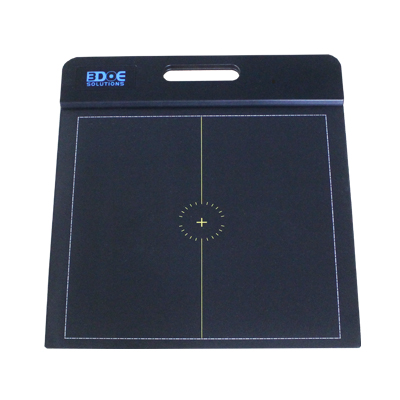
Tel :0755-86131192 86180201
Fax :0755-86180213
E-mail: info@3doe.com
Website: www.3doe.com
Address: 3A05, Minzhi Chamber of Commerce Building, Minzhi Avenue, Longhua District, Shenzhen
Are you here: Home > News > Industry NewsIndustry News
Application of dynamic plantar pressure analyzer in insole design
Time:2025-02-12 15:21:02Source:深圳市精易迅科技有限公司Views:671
The dynamic plantar pressure analyzer (DPSA) is a high-precision device used to measure the pressure distribution and biomechanical properties of the sole during dynamic walking or movement.
The device can provide key data such as pressure changes, center of gravity movement trajectory, gait symmetry, etc. at different stages of the gait cycle, providing a scientific basis for the personalized design of insoles. Compared with the traditional static plantar measurement method, dynamic analysis can more comprehensively evaluate the actual force of the sole, optimize the insole design, and improve its functionality and comfort. This paper will discuss the application and technical advantages of the dynamic plantar pressure analyzer in insole design.

1. Measurement principle of the dynamic plantar pressure analyzer
The dynamic plantar pressure analyzer is mainly composed of a high-precision pressure sensor array, a data acquisition system and analysis software. Its working principle is as follows:
(1) Sensor measures the force on the sole
The device usually contains an embedded pressure sensor pad (such as a gait measurement board) or a wearable pressure sensing insole, which can record the force on the sole of the foot in real time during walking or running.
(2) Data collection and analysis
When the subject walks or runs on the device, the system will continuously record the pressure distribution in different areas of the sole and transmit the data to the computer analysis software.
(3) Calculation of gait parameters
The system will automatically calculate important parameters such as step length, stride, gait cycle, gait symmetry, maximum pressure point, center of pressure trajectory (COP, Center of Pressure), etc., to help doctors or orthopedic engineers understand the biomechanical characteristics of the patient's foot.
(4) Generate personalized analysis report
The analysis software will generate a report based on the measurement data, revealing abnormal plantar pressure, arch collapse, gait asymmetry, etc., providing an accurate basis for insole design.
2. The key role of dynamic plantar pressure analyzer in insole design
Dynamic plantar pressure analyzer plays an important role in insole design, including data support, optimized design, and personalized customization, which is mainly reflected in the following aspects:
(1) Evaluate uneven force on the sole and optimize the insole support structure
Dynamic pressure analysis can identify high-pressure and low-pressure areas on the sole, helping engineers determine where the insole needs to strengthen support. For example, patients with flat feet usually have greater force on the arch area, while patients with high arches may have uneven pressure distribution between the front and back of the foot. Through pressure data, the insole support structure can be accurately adjusted to optimize the plantar force.
(2) Identify gait abnormalities and assist in gait correction
The dynamic analyzer can measure the patient's gait cycle, step length, stride, and center of gravity movement trajectory, and identify gait abnormalities such as asymmetric gait, abnormal rotation, or excessive eversion/inversion of the foot. These data can guide insole design and improve gait stability by adjusting the insole wedge slope, medial and lateral support structure, etc.
(3) Providing accurate plantar pressure buffering solutions
For patients with diabetic foot or individuals at risk of ulcers, high-pressure areas on the soles of the feet are prone to form pressure points, leading to tissue damage. Dynamic pressure analysis can help design insoles with pressure buffering functions, such as using materials of different hardness to provide buffering in high-pressure areas, improving comfort and reducing the risk of ulcers.
(4) Combining 3D scanning technology to achieve personalized customization
The dynamic plantar pressure analyzer can be used in conjunction with a plantar 3D scanner to achieve a comprehensive analysis of foot morphology and pressure data. This combination can more accurately design the support area, pressure buffer area and material distribution of the insole, ensuring that the insole not only conforms to the anatomical characteristics of the foot, but also optimizes biomechanical function.
3. Application of dynamic plantar pressure analyzers in different populations
(1) Athletes and fitness people
Athletes experience high-intensity plantar forces during training or competition, and long-term uneven pressure distribution may lead to sports injuries. The dynamic pressure analyzer can help athletes optimize the design of insoles, such as reducing impact by increasing the forefoot buffer area or adjusting the heel support area to improve stability, thereby improving sports performance and reducing the risk of injury.
(2) Patients with foot diseases
Patients with foot diseases such as flat feet, high arches, diabetic feet, and hallux valgus often have abnormal gait and plantar force. Dynamic pressure analysis can help doctors accurately assess the severity of foot diseases and design targeted orthopedic insoles based on pressure distribution data, such as providing arch support, reducing big toe pressure, and optimizing metatarsal bearing to relieve foot pain and discomfort.
(3) Elderly people
The elderly are prone to falling due to decreased muscle strength and unstable gait. Dynamic plantar pressure analysis can help evaluate gait stability and design insoles with good anti-slip and stability to reduce the risk of falling and improve walking safety.
4. Future development direction
(1) AI intelligent analysis and automated insole design
Combining artificial intelligence (AI) with big data analysis, the future dynamic plantar pressure analyzer can automatically identify abnormal gait patterns and recommend the best insole design to achieve intelligent orthopedic intervention.
(2) Wearable real-time monitoring
Future dynamic plantar pressure analysis technology may be more lightweight, and wearable sensors will enable all-weather monitoring. Users can continuously track plantar pressure changes in daily life and dynamically adjust the insole design based on the data.
(3) Intelligent materials and personalized manufacturing
Combining 3D printing and intelligent material technology, insoles can optimize their structure in real time based on dynamic pressure data, such as adjusting the hardness, elasticity or shape of the insole during walking to improve comfort and correction effect.




